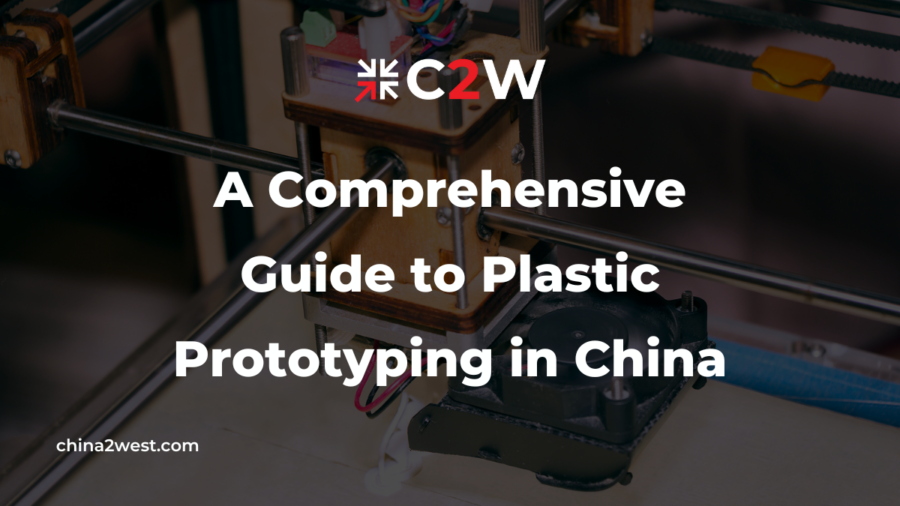When it comes to developing new products, plastic prototyping plays a crucial role in the process. By creating a physical model of your design, you can test its functionality, performance, and appearance before moving on to mass production. In today’s fast-paced market, plastic rapid prototyping has become increasingly popular due to its speed and cost-effectiveness. If you are considering plastic prototyping in China, this guide will provide you with valuable insights and tips to streamline your product development process.
Understanding Plastic Prototyping
Plastic prototyping involves creating functional models of products from plastic materials. These prototypes are used for testing design concepts, functionality, and market potential before full-scale production. The process allows for quick iterations and modifications based on feedback, significantly reducing the risk and cost associated with manufacturing defects later on.
Common Types of Plastic Prototyping in China
When it comes to plastic prototyping, there’s a diverse array of methodologies to choose from, each offering its own set of benefits and best-fit applications. Here are some common types of plastic prototyping in China:
1. 3D Printing (Additive Manufacturing)
3D printing, also known as additive manufacturing, is one of the most popular methods of plastic prototyping. This technique builds objects layer by layer, using materials such as ABS, PLA, and nylon. 3D printing is highly valued for its speed, affordability, and flexibility in creating complex geometries that would be difficult or impossible to achieve with traditional manufacturing methods.
2. CNC Machining
CNC (Computer Numerical Control) machining involves subtracting material from a solid block using high-speed, precision tools. Unlike 3D printing, CNC machining is a subtractive process and is renowned for its precision and ability to produce high-fidelity prototypes that closely mimic the final product.
3. Vacuum Casting
Vacuum casting is a versatile and cost-effective method for making high-quality prototypes or small batches of parts. It involves creating a silicone mold from a master model (often made by 3D printing or CNC machining) and then using that mold to cast parts with a polyurethane resin under vacuum.
4. Injection Molding
For plastic prototyping, injection molding can also be employed, especially when the goal is to test parts that will ultimately be produced by injection molding. It involves injecting molten plastic into a metal mold to form parts. While the initial costs and time investment for creating the molds are high, injection molding is unparalleled for mass production.
5. Rapid Tooling
Rapid tooling bridges the gap between prototyping and full-scale production, combining the techniques of 3D printing and traditional tooling methods. It is often used to produce molds for injection molding or other forms of casting, reducing the time and cost associated with traditional tool making.
Advantages of Plastic Rapid Prototyping in China
Engaging with Chinese companies for plastic rapid prototyping presents several strategic benefits. The foremost advantage lies in the agility of production processes, enabling prototypes to be developed and delivered at an unmatched pace. This efficiency is underpinned by cutting-edge technologies and a workforce proficient in the latest prototyping techniques.
Another compelling aspect is the cost-efficiency that Chinese prototyping services offer. Competitive pricing is achieved through economies of scale and a comprehensive supply chain, making it an attractive option for businesses aiming to minimize development costs without compromising quality.
Furthermore, the flexibility to explore various design iterations swiftly allows for a dynamic development cycle, enhancing the overall product design through rapid feedback and adjustments. This capacity to iterate quickly, supported by a robust manufacturing ecosystem, positions China as a hub for plastic rapid prototyping that can cater to the demanding timelines and budget constraints of modern product development endeavors.
Intellectual Property Protection During Prototyping
In the sphere of plastic prototyping, especially when operations are outsourced to China, securing your intellectual assets becomes paramount. The first step toward safeguarding your innovative designs is the implementation of a robust non-disclosure agreement (NDA). This legal document should be in place prior to any exchange of design specifics or CAD files, ensuring a formal commitment to confidentiality from all involved parties. Beyond the NDA, it’s advisable to take proactive measures by registering your design and considering patent applications where applicable. These actions establish a legal groundwork that not only protects your intellectual property but also deters potential infringement. When navigating the complexities of international prototyping ventures, understanding and utilizing these protective measures can prevent unauthorized use of your designs, maintaining your competitive edge and securing the fruits of your creative endeavors.
Selecting the Right Plastic Prototyping Service in China
Selecting the right plastic prototyping service in China involves considering various factors to ensure you receive high-quality prototypes that meet your specific needs. Here’s a detailed guide on how to choose the best service:
1. Understand Your Prototyping Needs
Begin by defining what you need from the prototyping process. Consider the specifics of your project such as the type of plastic, the complexity of the design, the number of prototypes needed, and the intended use of the prototypes. Understanding these factors will help you identify services that are well-equipped to meet your specific requirements.
2. Research Potential Services
Start by compiling a list of prototyping services in China that specialize in plastic manufacturing. Utilize trade websites, industry forums, and business directories to find companies. Look for services that have experience in your industry or with your specific prototyping needs.
3. Evaluate Their Prototyping Processes
Investigate the technologies and methods each service uses for prototyping. Common techniques include CNC machining, 3D printing, and injection molding. Assess whether they have the latest technologies and if they can offer scalable solutions if your project moves from prototyping to full-scale production.
4. Check Reviews and Testimonials
Reading reviews and testimonials from previous customers can provide insight into the quality of the prototypes and the service provided. Look for feedback about the accuracy of the prototypes, adherence to deadlines, and the service’s ability to handle complex requirements. Websites like Alibaba and Made-in-China can be useful for finding reviews.
5. Assess Communication and Support
Effective communication is crucial when working with any service, especially if the provider is overseas. Evaluate how responsive the services are to inquiries and whether they provide clear, detailed answers. Check if they have English-speaking representatives and understand the importance of regular updates throughout the prototyping process. For more information on how to navigate the process of plastic prototyping in China, or to start your prototyping project, contact us today. We’re here to help streamline your product development journey with professional insights and support.


